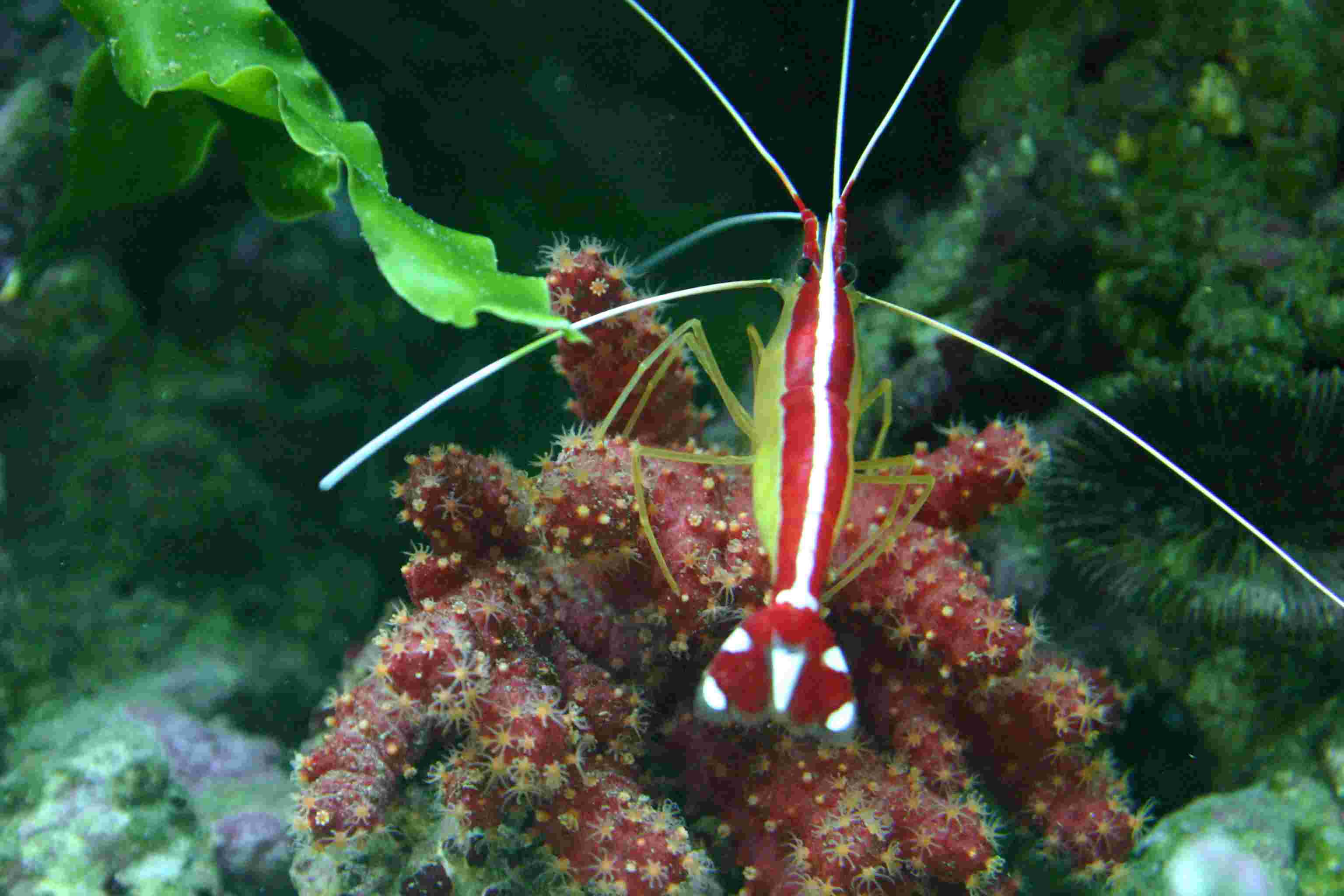
Researchers in Israel have uncovered the unique optical nanostructure that gives an ocean-going scavenger its brilliant white colouring. Using a range of imaging techniques, a team led by Benjamin Palmer at Ben-Gurion University of the Negev, Israel, showed that spherical particles in Pacific cleaner shrimp scatter incoming light in all directions, while avoiding any overlap in the scattering patterns they produce. The discovery could lead to new bio-inspired white pigments.
Many organisms have evolved the ability to manipulate light in unique and fascinating ways. Mimicking these mechanisms has led researchers to new designs for several optical devices, including lenses and mirrors. Structures such as butterfly wings and bird feathers have likewise inspired new coatings that produce vivid colours through the light scattered by their nanostructures.
So far, however, one colour has proven particularly challenging to produce via these structural means – that is, without relying on chemical pigments. “One of the most intriguing problems is the search for alternatives to the inorganic materials that give white paints and food colourings their whitish hues,” explains team member Dan Oron of the Weizmann Institute of Science. “This is because the inorganic material most commonly used in these products – nanocrystalline titania – is suspected as harmful.”
Overcoming optical crowding
The nub of the problem is that to generate white hues, photons of all optical wavelengths need to be scattered multiple times, such that they lose their directional information completely. For this to happen, the nanostructures responsible for scattering need to be packed very tightly. Such tight packing, however, creates the problem of “optical crowding”, where scattering patterns overlap – reducing the scattering structure’s overall reflectance.
Despite these challenges, one animal has proven that the complexities of optical crowding are not insurmountable. Inhabiting coral reefs across the tropics, the Pacific cleaner shrimp is easily recognized by the striking white colouring of its antennae, cuticle, tail, and jaw, which reflect up to 80% of incoming light.
Advanced imaging and simulation
In their study, Palmer and colleagues focused on nanostructures in the cleaner shrimp’s chromatophore cells, which are known to be responsible for their brilliant white hue. Using a combination of cryo-electron microscopy and optical imaging, they characterized the structure, organization and optical properties of the spherically-shaped particles that form the scattering layer within the cells. They also used numerical simulations of electromagnetic field propagation to understand the optical response of the scattering medium as a whole.
The team’s analysis revealed that these particles scatter light in many directions thanks to the unique structure and arrangement of the flat molecules that constitute their building-blocks. “The particles are liquid crystalline arrangements of these planar molecules,” Oron explains. “All these molecules are arranged such that their flat side is perpendicular to the sphere’s radius.”
Altogether, this structure significantly reduces the amount of material needed to make the shrimp’s antennae and bands appear white. This enables the cleaner shrimp’s chromatophore cells to eliminate the effects of optical crowding, while also scrambling the polarization of incident photons as they scatter from the particles – destroying their directional information. “In a sense, this optical anisotropy makes the ensemble of spheres scatter light as if they were made of a material with a higher refractive index than they really have,” Oron explains.
Safer white paints and food colourings
The results are a good example of how evolutionary solutions of organisms like the cleaner shrimp can inspire optimized technologies. By mimicking the shrimp’s mechanism for optical anisotropy, Palmer’s team hope that researchers in future studies could design advanced, ultra-white organic nanostructures that are safe for use in products like paint and food colouring.

Scientists identify gene responsible for butterfly’s dazzling structural colours
“More generally, the findings point at the role that strong optical anisotropy can take as a design parameter in the construction of artificial optical devices, provided we can master the growth of similar crystalline arrangements of the right organic molecules,” Oron concludes.
The research is described in Nature Photonics.
- SEO Powered Content & PR Distribution. Get Amplified Today.
- PlatoAiStream. Web3 Data Intelligence. Knowledge Amplified. Access Here.
- Minting the Future w Adryenn Ashley. Access Here.
- Buy and Sell Shares in PRE-IPO Companies with PREIPO®. Access Here.
- Source: https://physicsworld.com/a/mystery-of-bright-white-shrimp-solved/



